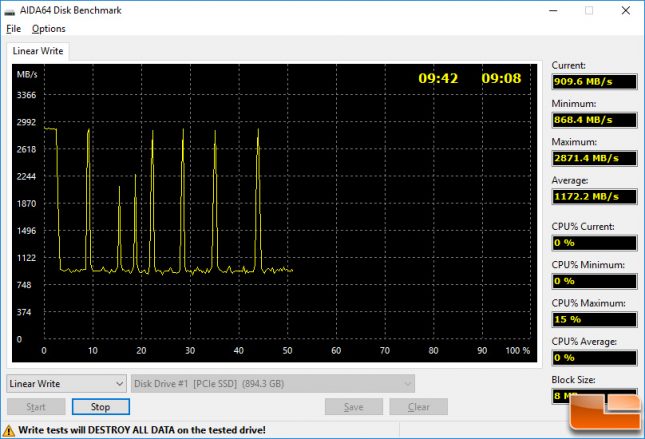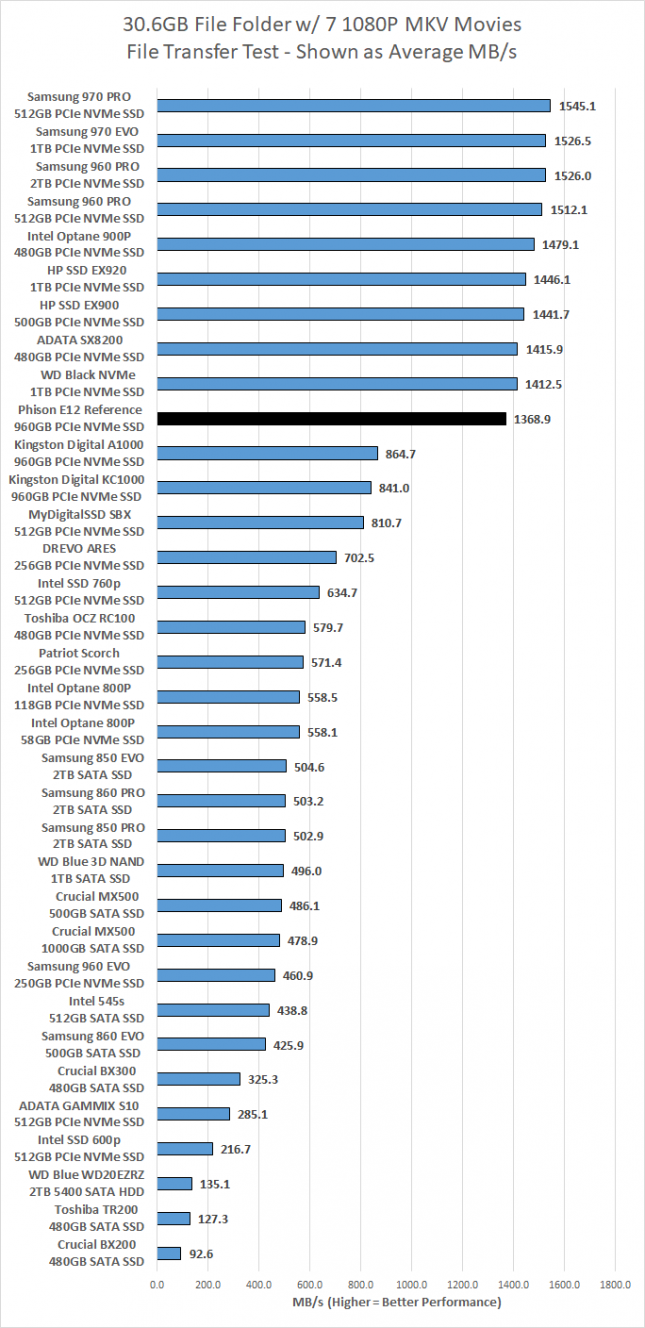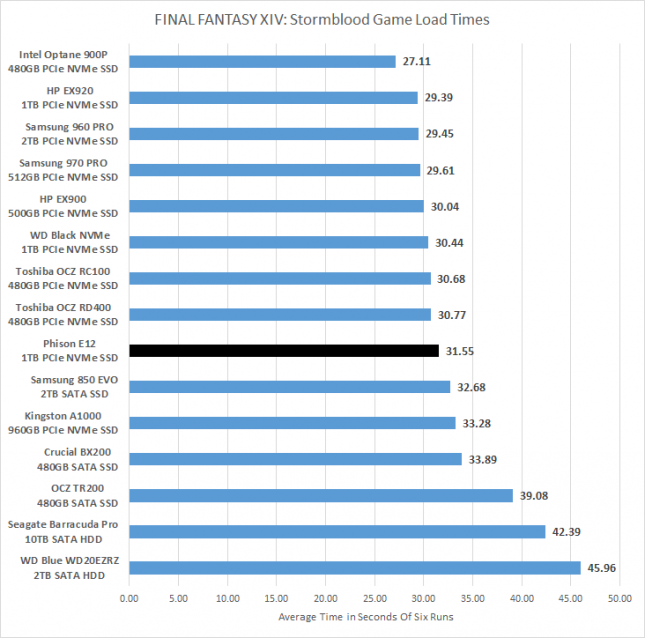Sneak Peek – Phison E12 High-Performance SSD Controller
Linear Write, File Transfer and Game Load Time Testing
AIDA64 Disk Benchmark
We’ve had some people ask for AIDA64 linear write tests to be done, so we fired that utility up to see what would happen.
When you take a look at extended sustained write performance you’ll see that the performance started out at around 2871 MB/s and remained there until about 3% of the drive is filled and then the performance drops off to around 870 MB/s. This is because the SLC cache on the Phison SLC reference drive was full and the data was being written directly to the 3D TLC NAND Flash. There were many performance spikes where the drive tried to recover, but couldn’t. We talked to Phison and thy are doing something new when it comes to ‘burst’ recovery, which is what they call it when the SLC cache is full. The Phison E12 controllers software is trying to recover in real-time, but it can’t as once the SLC cache is full the drive needs roughly 5 seconds of idle time to recover. In the worst case scenarios it will take 10-20 seconds of idle time on the drive to fully recover its ‘burst’ capabilities.
Real World File Transfer
Let’s see how real-world was when writing a movie folder containing seven 1080P movies over to the SSD. For this test, we are going to measure write performance by transferring over a 30.6GB folder of movies off of a PCIe NVMe SSD to the drive being tested to see how performance looks.
The Phison PS5012-E12 reference drive finished our file transfer test with an average speed of 1368.9 MB/s. This score puts just behind the new WD Black M.2 PCIe NVMe 1TB drive with their new in-house controller as well as the ADATA SX8200 480GB drive and HP SSD EX920 1TB drives that both use the Silicon Motion SM2262 controller. This is a decent score, but after seeing some of the highest highest sequential read/write speeds ever on ATTO Disk Benchmark we were expecting to see it do a little better!
Game Load Time Testing
To test game load times we use the Final Fantasy XIV: Stormblood Official Benchmark with the game resolution bumped up from the default setting to 1920×1080, which is the most widely used screen resolution by gamers.
The results here show that spinning disks take the most time then you have SATA III SSDs being a good bit faster and then you have the PCIe NVMe drives being the fastest. Most PCIe NVMe drives with NAND Flash memory finish load the game in around 29-33 seconds and the Phison E12 reference drive came in at 31.55 seconds on average. That puts it on the slower side of the other PCIe NVMe drives, but it was nearly 2 seconds faster than the Phison 5008-E8 controlled PCIe NVMe drive (Kingston A1000 960GB). The Intel Optane 900P with 3D Xpoint memory technology still is the fastest drive when it comes to game load times.



